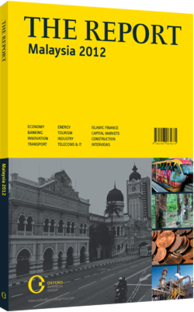OBG talks to Syed Hamid Syed Jaafar Albar, Chairman, Land Public Transport Commission (SPAD)

Interview: Syed Hamid Syed Jaafar Albar
How can public transport ridership be improved in Malaysia’s primary metropolis, Kuala Lumpur?
SYED HAMID SYED JAAFAR ALBAR: Currently, the statistics indicate that 17% of the population in Kuala Lumpur use public transportation. Our target is to achieve 25% utilisation by the end of 2015. To this end, various investments and initiatives are being made on the supply side. Beyond this, we need to ensure they serve the population and are attractive for commuters. We cannot neglect the importance of image and presentation, and changing perceptions related to public transportation – large gains can be made through this alone. Affordability is also one of the chief concerns we are addressing, and so far we seem to have had a good response.
Looking at the longer term, our goal is to have over 50% using public transport by 2020. This is a big task; however, looking at the rate of uptake we have achieved so far, it is attainable. This goal is part of a bigger picture – we want to see Kuala Lumpur make the list of the world’s top 20 liveable cities, and this cannot be achieved without an effective public transport system.
How does progress currently stand with the My Rapid Transit (MRT) project?
ALBAR: We have a population of 6m, and projections tell us we need to factor in population growth to approximately 10m by 2020. Meanwhile, we have to maintain an environment conducive to business, investment and a high quality of life. With regards to MRT, in our immediate plans we are looking at 51 km of metro line with 31 stations in the first phase. This is set to be completed by 2016 and is scheduled to be in operation in 2017.
How do you see the public transport master plan being integrated with the MRT project and the rest of the Economic Transformation Programme (ETP)?
ALBAR: As an authority, we are required to plan and advise the government on policy. We are developing a 20-year master plan for public transport on the national, regional and sub-regional levels, which means interfacing with the different strata of government. Prior to this plan, there had never been a single overarching plan or authority that had looked at either the macro or micro side of public transport, so this was something that needed to be looked at strategically.
The MRT project is the backbone of public transport infrastructure in Kuala Lumpur, so its successful implementation is crucial. However, we must recognise that it is still only one of several projects looking to address public transportation; taxi and bus services are also getting a lot of attention. For buses in particular, we are looking at an express transit system. Then there are the existing modes, such as light rail transit and a monorail, so integration of services has become key to maximising effectiveness. We see ourselves as an enabler for the ETP, helping Malaysia to reach its goal of achieving developed country status by 2020.
What initiatives is SPAD taking to offer the private sector opportunities to get involved in the improvement of public transport?
ALBAR: In contrast to the global situation, particularly in the developed world where government spending on such infrastructure projects has drastically declined, in Malaysia there will be a great deal of opportunities for both domestic and international firms, particularly in the transport sector. There are various types of projects, and each have their own corresponding level of involvement; on one side we have construction along with engineering work, and on the other we have the procurement of the rolling stock. Particularly on the construction side, this will have a lot of positive spin-off effects on a variety of related industries.
The tendering process is very open and transparent, so both local and international firms can compete fairly for these projects. The financing in many cases will involve a public-private partnership, as is the case in many projects involving major public works development, due to the difficulties involved with the private sector raising funds for such long-term investments.
You have reached the limit of premium articles you can view for free.
Choose from the options below to purchase print or digital editions of our Reports. You can also purchase a website subscription giving you unlimited access to all of our Reports online for 12 months.
If you have already purchased this Report or have a website subscription, please login to continue.

